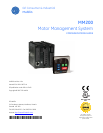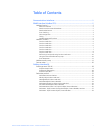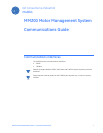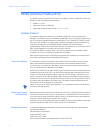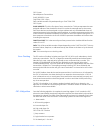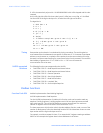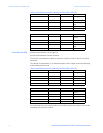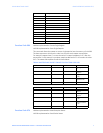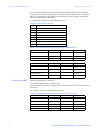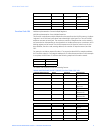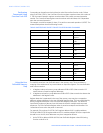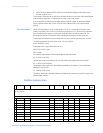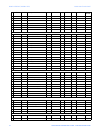4 MM200 MOTOR MANAGEMENT SYSTEM – COMMUNICATIONS GUIDE
RS485 INTERFACE (MODBUS RTU) COMMUNICATIONS GUIDE
G: 16 bit characteristic polynomial = 1010000000000001 with MSbit dropped and bit order
reversed
shr(x): shift right (the LSbit of the low order byte of x shifts into a carry flag, a '0' is shifted
into the MSbit of the high order byte of x, all other bits shift right one location
The algorithm is:
1. FFFF hex —> A
2. 0 —> i
3. 0 —> j
4. Di (+) AL —> AL
5. j+1 —> j
6. shr(A)
7. is there a carry? No: go to 8. Yes: G (+) A —> A
8. is j = 8? No: go to 5. Yes: go to 9.
9. i+1 —> i
10. is i = N? No: go to 3. Yes: go to 11.
11. A —> CRC
Timing Data packet synchronization is maintained by timing constraints. The receiving device
must measure the time between the reception of characters. If 3.5 character times elapse
without a new character or completion of the packet, then the communication link must
be reset (i.e. all slaves start listening for a new transmission from the master). Thus at 9600
baud a delay of greater than 3.5 x 1 / 9600 x 10 x = x 3.65 x ms will cause the
communication link to be reset.
MM200 supported
functions
The following functions are supported by the MM200:
• FUNCTION CODE 03 - Read Setpoints and Actual Values
• FUNCTION CODE 04 - Read Setpoints and Actual Values
• FUNCTION CODE 05 - Execute Operation
• FUNCTION CODE 06 - Store Single Setpoint
• FUNCTION CODE 07 - Read Device Status
• FUNCTION CODE 08 - Loopback Test
• FUNCTION CODE 10 - Store Multiple Setpoints
Modbus Functions
Function Code 03H Modbus implementation: Read Holding Registers
MM200 implementation: Read Setpoints
For the MM200 implementation of Modbus, this function code can be used to read any
setpoints (“holding registers”). Holding registers are 16 bit (two byte) values transmitted
high order byte first. Thus all MM200 Setpoints are sent as two bytes. The maximum
number of registers that can be read in one transmission is 125.
The slave response to this function code is the slave address, function code, a count of the
number of data bytes to follow, the data itself and the CRC. Each data item is sent as a two
byte number with the high order byte sent first.
For example, consider a request for slave 17 to respond with 3 registers starting at address
006B. For this example the register data in these addresses is as follows:



